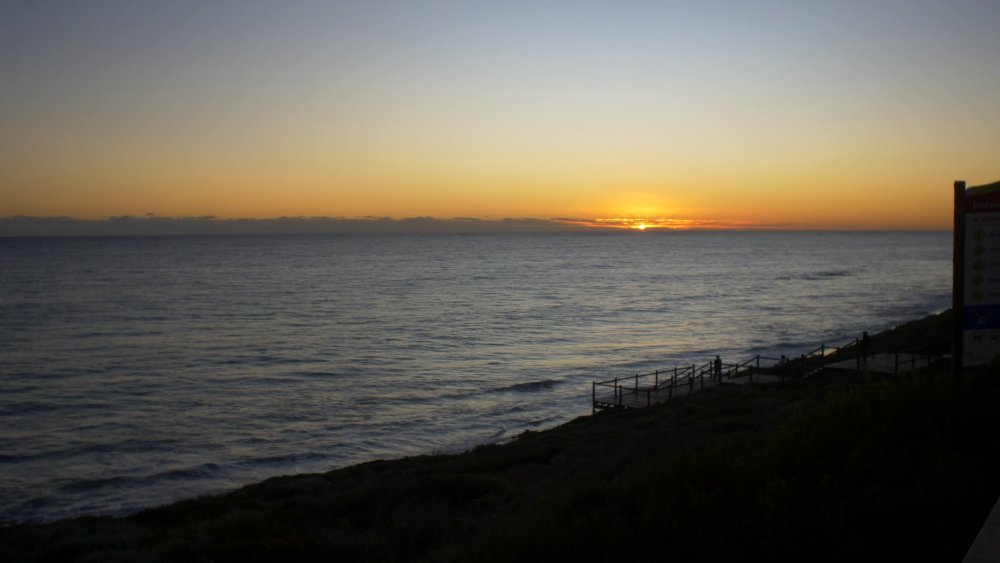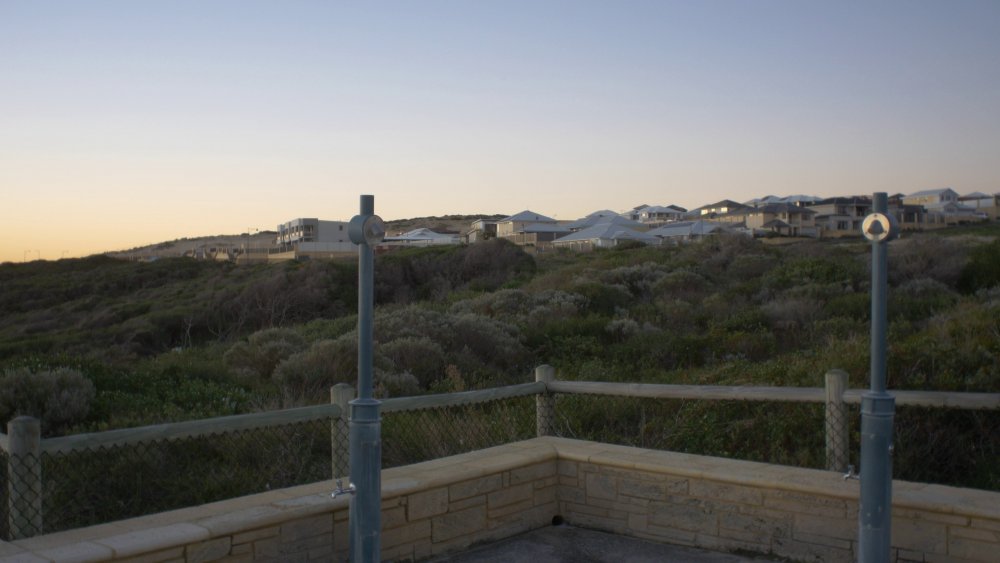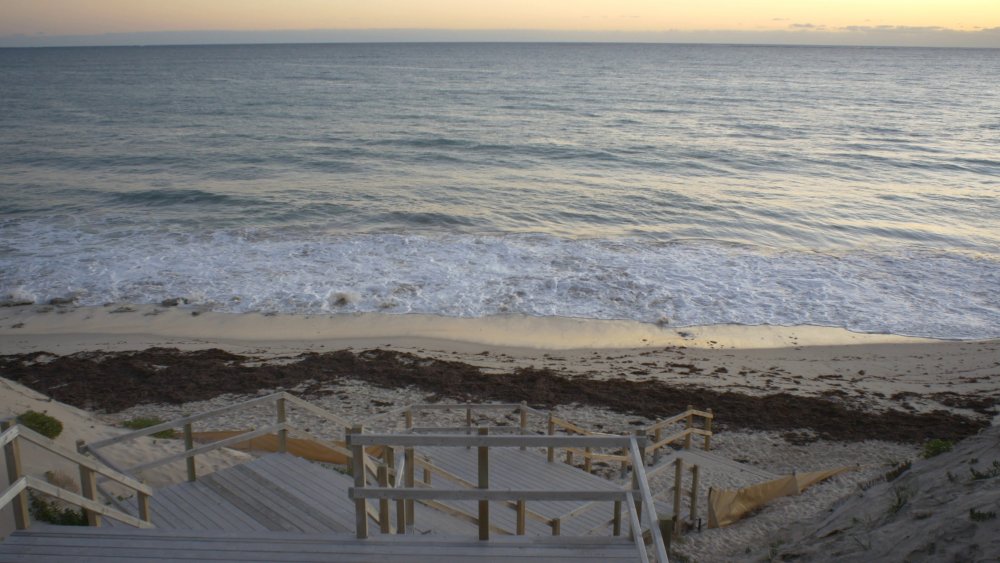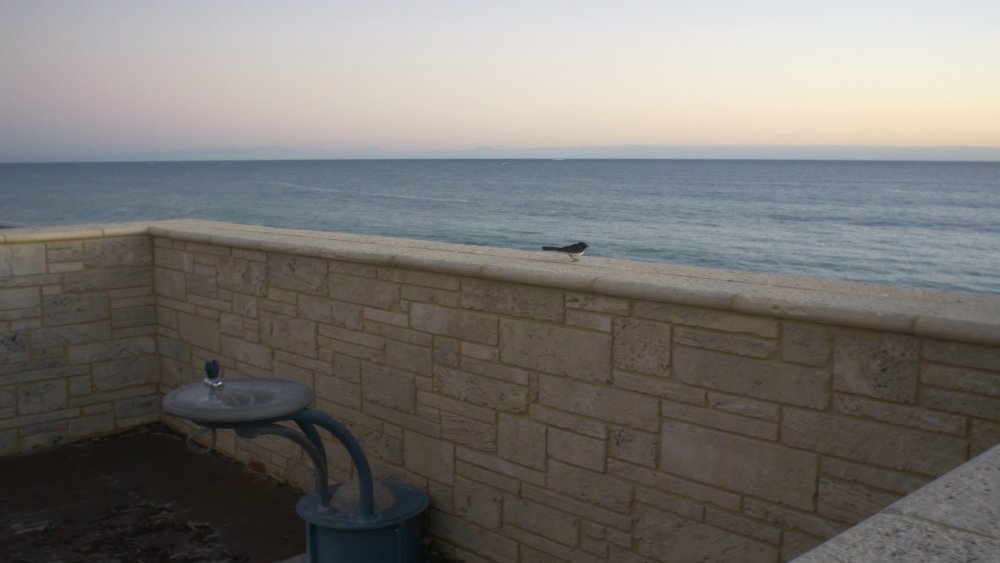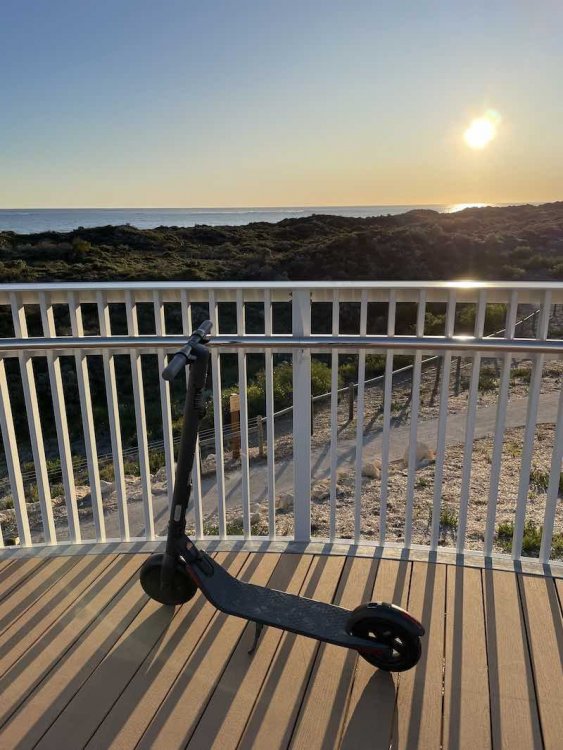-
Posts
7,991 -
Joined
-
Last visited
Content Type
Profiles
Forums
Articles
Everything posted by kye
-
According to one article it said that Hitchcock preferred 50mm, which on S35 would be ~80mm FF. The 15mm on the GX85 in 4K mode is about a 2.2x crop factor, so around 33mm equivalent. Maybe it's the contrast or the colour perhaps?
-
Speaking of great colour.... great colour! Things like this just make me more motivated to practice my colour grading and develop my skills. Every time I fire up Resolve and do some colour grading I can feel that I'm getting just a little bit better. Both in seeing and noticing things, and also in being able to make the colour how I want. While I was watching it I kept thinking of the FD and then thinking it was a Canon camera, but a G6 - that makes it all the more impressive! 🙂
-
Thanks!! That's the second grade I did on that little edit. The first was with a 250D 2393 PFE film emulation combo, and it well and truly broke the image! Especially in the sky, it really exposed the jagged compression artefacts. So I re-did the grade manually, dealing in a number of adjustments that are similar to a film emulation (including things like lowering the luma of saturated colours, etc) but limiting them to juuuuust before the image broke. I think I've worked out that the GF3 is basically the digital equivalent of the 8mm film camera when film was in. It's not sharp, hasn't got leading image quality, hasn't got stabilisation (except if you put a huge lens on it), and is full-auto, but is small and fun to use and gives a very "amateur" aesthetic.
-
Just popped out down the beach and discovered that fashionably late isn't a thing with sunsets. Good thing I'm not fashionable enough to have been that late, but also not early enough either. Here are some ungraded frame grabs from the GX85 and Olympus 15mm F8 pancake lens, which fits nicely in the jeans pocket. @webrunner5 I seem to remember you were keen on this lens? It sure is sharp and relatively distortion free... it's just not, well, fast! These are 4k grabs, so click on them to see the full quality. I don't know what ISO the GX85 was at, but the images don't look too bad for F8 and after sunset.
-
I'm confused. I was talking about screens that are flat against the back of the camera unless they are flipped out to the side where they can then rotate to face up and down. For example, this is the GH5 mk2: It cannot be tilted up or down while remaining in-line with the lens. This is the type of screen that is required to shoot sideways, like this: A screen that only tilts in-line with the lens cannot be seen from the side: ...and seeing the screen from the side is required for shots like the train one, where it's not possible to stand in-line with the lens because you'd be standing outside the train. I know you don't like the flippy screens, but you said "They can also be flipped out sideways and used for no reason known to man in that manner." and I am telling you that I use it in that manner from time to time, and in those situations it's the only way to get the shot (and be able to see your composition while recording).
-
Hmm, that's not what I would hope for. How far does it tilt down? Oh, and how far does it tilt up and down when also flipped out to the side? I shoot high and low angles frequently and am looking at the camera from almost directly above or underneath.
-
I use that mode to shoot around corners. A common use is shots like this: Personally, I find that trying to stand directly behind the camera in such situations to be quite problematic! It's also good for shooting at a 90 degree angle when you can only just reach to put the camera around the corner, and can't stand any closer. Sometimes good shots can be had in historic places by putting the camera and your arms through the bars of a locked gate or barred window etc and holding the camera ahead of you to shoot at an angle. I've gotten some great high-angle shots by using this trick from tall buildings or pedestrian walk-ways that are fitted with bars to prevent people jumping or climbing where they shouldn't be.
-
I think once you get to the point of understanding the focal lengths and what they do emotionally and how you can work with them (composition vs distance vs distortion vs human perception of faces) then choosing focal lengths simply becomes a matter of choosing the style and content of a production and selecting accordingly. I think the fact we're thinking along the same lines just means that we've all gotten to a level of understanding where the answers become pretty self-evident. https://noamkroll.com/many-iconic-directors-have-shot-their-feature-films-with-just-a-single-prime-lens-heres-why/
-

Panasonic S1 V-LOG -- New image quality king of the hill
kye replied to Andrew Reid's topic in Cameras
Message received... I will start creating videos with flowers in them immediately! -
Everything can be measured. If you put a bunch of people into a blind A/B/X testing setup leaded with uncompressed and compressed RAW images and more than, say, 65% of the time they could guess which was which then that wouldn't be visually lossless, whereas if they got it right <65% of the time then that could be interpreted as visually lossless. These aren't the real numbers, but somewhere there will be a standard for "visually" and if not then one could be agreed during any legal process if that was required. There is also the SSIM which is "a perceptual metric that quantifies image quality degradation": https://www.imatest.com/docs/ssim/ Something like this might already be the established way to judge such things in the legal system, and it avoids the inconvenience of dealing with people in your testing process.
-
@MrSMW @Kisaha What are your thoughts on the tilt only + flippy screens combinations, like the GH6 and S1H have? They're bigger and chunkier, but do give the option for both. Personally, I loved the tilt-only screen on the XC10 because it's so compact and linear with the camera but I also really appreciated the flippy screen on the GH5 for many moments where I wasn't able to be behind the camera and could use the camera from the side etc.
-
....and a 1.5 crop on the Sony A7iv too... I literally underlined and bolded it. In terms of dealing with crops I'm totally with you, the last thing I want is for the fps to modify my entire lens collection. I'd genuinely be interested in the Komodo if it wasn't for the horrific cropping it does. I like to own the exact focal lengths I know that I like to use and so because I'm not buying the whole set I can buy really nice copies of those models - something that a series of crops just throws out the window. But, like I've said, it seems like almost every manufacturer does it.
-
@mercer and I have had many discussions that revolved around a two-lens setup - normally something like (on FF) a 50mm for the majority of shots where everything is 'normal' in the plot, and a 24mm wide for location/establishing/emphasis shots and those wide close-ups where the shit has hit the fan for a character. It seems a lot more flexible stylistically to have a couple of lenses so that you have some dynamic capability to change the perspective during moments of emphasis or when you want to change the mood in some way. It's also more practical being able to do wide shots with a wide lens, otherwise you have to shoot them from far far away - something that a low budget might struggle with, so it's a practical choice too. In todays crazy market for vintage primes it's not too much of an ask to get a 24 and 50mm from a set, even the most sought-after sets are affordable if you're not chasing the fastest primes. For example just getting a 2.8 of each focal length should be enough for the DoF but shouldn't break the bank for most.
-
-
Great post. Before I got into video I did some street photography and two of the "rules" I used to use were: 1) if the person you're shooting sees you then make eye contact, smile, and say "thank you" 2) If the person asks you to delete the shot then smile and say "sure" and just do it There's lots of talk online about the first one and the general theory (which fits my experience) is that people don't know what to think when they see someone out shooting photos and so they look to you to determine how to react and what to think about it, so by smiling you're indicating that you're a calm and well-intentioned person (rather than a threat) and by saying thanks it makes them feel good because you're indicating they've done you a favour (which they have) and doing things for other people who seem nice gives people a nice feeling. If you're asking people for permission beforehand (which some people prefer) then a compliment is often a great icebreaker like "I love your hat/shirt/look/smile - would you mind if I took a quick photo?", as once again, people see that you're a calm person, its flattering (presumably they also like the hat they're wearing, or whatever you mentioned), and it explains why you might want to take a photo of them. I remember that people are often calmed if you give them a business card too, as it's "proof" that you're legit and not up to no good. Remaining calm and having an answer ready goes a long way it seems. Still, confrontation isn't something that I'm particularly fond of, so I tend to avoid it where I can. In terms of flying drones, I think it seems like a reasonable income stream if you're willing to go through all the hoops to get registered etc, and then do enough flying to justify getting certified etc. For me, I'd spend about 3 hours flying per country I'd be visiting - the absolute worst type of bureaucracy-to-flying ratio imaginable! Yeah, I skipped through the video looking for him to get arrested - had he not mislabeled it I might have relaxed and watched it more thoroughly. Still, clickbait works - just ask the people who have written headlines for tabloid newspapers and pamphlets for the last, say, 300 years!
-
Great shots he managed to get, but yeah - there's no way I'd even try. With all the regulations being different across different countries, with almost everything cool (or just everything) off-limits to fly near, and the... let's say... "unpredictability" that members of law enforcement sometimes exhibit in various countries, I wouldn't even bother buying one.
-
A quick google for "Sony crop 60p" revealed this as the top hit, which lists a crop on both the A7S3 and the A74: https://www.4kshooters.net/2022/03/04/shooting-full-frame-4k-60p-video-on-the-sony-a7-iv-no-crop/ If you search for Nikon instead you get this: https://www.engadget.com/nikons-latest-z-6-ii-firmware-unlocks-4-k-60-fps-recording-110552464.html I'd recommend fact-checking your posts before you post them, rather than leaving others to do it, or to leave the people that don't do it to walk away with false information.
-
Yeah, and that you can buy your way out of having no skill or experience.
-
Your homework assignment is to set a timer for a random number of minutes, then leave your house. Every time the timer goes off, reset the timer to a new random number of minutes and pull out your camera and then record yourself for 1 minute without stopping or ruining the composition. You must record for a full minute regardless of where you are or what you are doing. Once you have done that, you will understand why adding a handle to a camera makes it far less practical to use when out and about. This is literally what vloggers do - they record in their car, in the grocery store, in the line at the grocery store, walking down the street, walking on the beach, riding a bike under a bridge, etc.
-
Yeah, I cannot recommend WanderingDP enough. Ironically, I think that this is probably what a camera YT channel should be, the problem is that everyone else is so pathetic in comparison that we see the majority and just think it's normal. The Meet The Gaffer is great too: https://www.youtube.com/c/LukeSeerveld/videos Personally I find these tutorials have limited use as I don't shoot controlled situations and don't use lighting (available lighting only for me) but the WanderingDP channel talks enough about composition that it's worth learning so that when I'm shooting I can know what to aim for and if the opportunity arises I can use some of those principles. Perhaps the biggest lesson here is that pros know so much more than "YouTube - only creators" that they're mostly not worth your time to watch.
-
This is a common thing (having crops for faster frame rates) - just look at the RED cameras like the Komodo. I also understand it's a common thing for larger sensors and higher resolutions as they have longer readout speeds. There are two ways to build a camera image pipeline: The first is where you read the whole sensor, then downsample that to the target resolution, then compress it. This requires significant processing power. The second is where you read the target resolution off the sensor, either by cropping into it, or by skipping / binning pixels on the sensor. This skips the downsampling stage. The other optimisation is to compress the image to a less processor-intensive codec, or to not compress it at all (RAW). Canon cameras (and RED) employ various elements of the above, including the crop / skip and the non/low-compression. The compression is one reason that Canon cinema cameras and their higher costing cameras have an advantage as Canon put a second DIGIC processor in there to do this processing in-camera. Meanwhile, Panasonic in the GH5 reads the whole sensor, downscales the whole sensor, and compresses the image beautifully, up to 60p and potentially up to 180p (above 60p it's 1080 output so not sure if it still downscales the whole image). You talk about how FF is the way to go and small sensors are no good, you hating on Canon for doing this is literally just the consequences of the larger sensor.
-
An absolutely KILLER source of info on this is the YT channel WanderingDP: https://www.youtube.com/c/wanderingdp/videos His whole channel is full of video after video where he breaks down commercials (and the odd music video) talking about the composition, lighting, and using the space. He is a working pro and is breaking down the work of some of the biggest names in the business (who often do commercials for cash between big features but are uncredited as they don't want to be associated with "lowly" advertising work). I suggest binge-watching his channel. He's got this thing called "The framework" which is his set of rules for getting great images. I'm not sure if it's written down anywhere, but over watching a number of these videos it's a pretty repeatable pattern that involves many things already mentioned in this thread: get lots of space between the subject and background light all your practicals (making sure they are high CRI - take bulbs with you or portable LED lights you can put inside a lighting fixture) shoot into the corner of the room for leading lines Rembrandt lighting Haze Use natural lighting with sheers Augment natural light from outside with motivated spotlights etc He also talks a lot about how to work efficiently, for example how to light an entire room so that you have a range of compositions that all require zero or only minor lighting tweaks (first principle is to light for the wide, then you can tweak as you shoot tighter - if you go the other way you'll always be zooming out and seeing your lighting come into frame). Once you've watched enough of his videos you'll be able to see the steps and follow them really easily. Of course, there's more to being a great DP than this, but watch a few dozen of his videos over a week or two and you'll leapfrog over the vast majority of the DPs around who haven't studied this stuff. Plus he's quite funny and very easy to watch.
-
I'd imagine it's slightly worse considering the the sensor is likely older and definitely smaller but is still crippled with the same codec and bitrate. Each time they upgrade I've seen comparisons (not with this model yet though) that compares the new and previous ones, and they're always a little bit better but ultimately still disappointing. Lok Cheung normally does a comparison and seems to own all the models in the range, but he hasn't released a review on this model yet, which is unfortunate.
-
Yes, the whole pocket camera market gradually got eaten by smartphones, and as you say many of the fast short zooms got "upgraded" to slower super zooms in subsequent models. One thing I'm surprised that no-one has released is a camera with a zoom that starts wider than 24mm equivalent. To me, vlogging is a niche that still requires a compact and flexible camera, which is something that can benefit from having an integrated lens due to the ability to integrate the lens (especially any folding mechanisms) into the space occupied by the camera. I would have thought a pocketable camera with a flip screen, decent directional mic setup, 18-50mm equivalent lens, and either 1" or MFT sensor would be a pretty popular option. the challenge for vlogging is that 24mm isn't wide enough and you need to extend the camera with a handle of some kind which makes it more cumbersome to use and carry, plus a wider lens is always useful for taking landscape shots which is what tourists want to do every time they stand somewhere and say "wow". Panasonic releasing the 10-25mm lens was an interesting move as it's a 20-50mm which sacrifices the long end of a 24-70 to give a bit more width, whereas the 16-35 lenses are a bit short at 35mm rather than 50mm.




